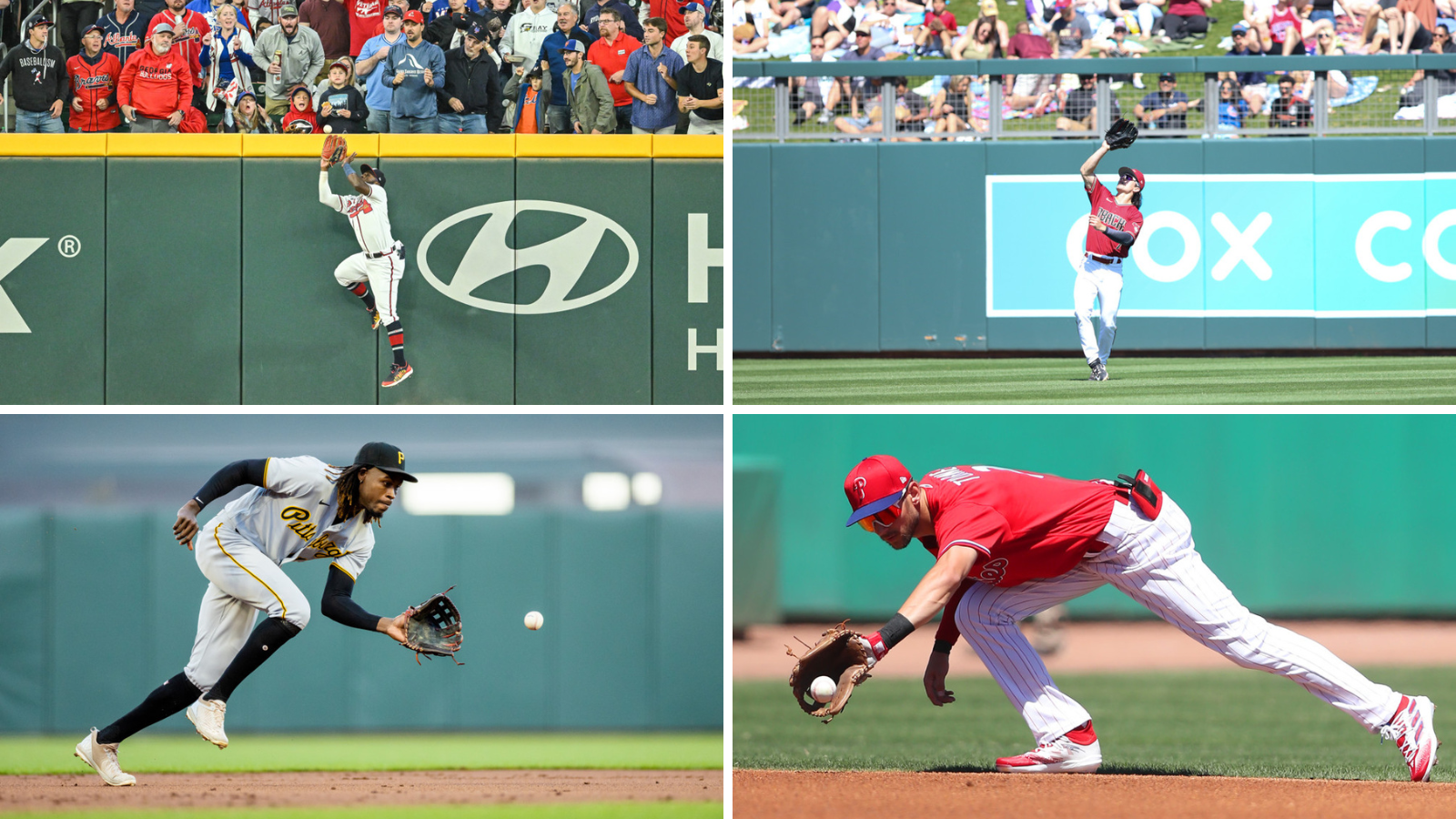In this era of baseball, there are now two philosophies on how to play defense. Each philosophy is trying to demonstrate which way is best to convert balls into outs. The traditional way of playing a straight up defense has been slowly dying out while the idea of moving defenders around is taking over the league. Teams all around the league are incorporating shifts whether big or small to try to get the advantage on hitters with certain batted-ball tendencies.
As of today, the two top defensive teams according to Defensive Runs Saved (DRS), a statistic created by Baseball Info Solutions to measure defensive play, are the Chicago Cubs and the Houston Astros. The Cubs have saved 103 runs on defense and the Astros have saved 86. When it comes to defensive philosophies, these teams are polar opposites. The Astros have been leading the new wave of defensive positioning, while the Cubs seem content to keep traditional positioning and only shift when really necessary.
The Astros have been at the forefront of this new defensive philosophy as they have been the most frequent user of shifts for the past three seasons. This season, they have shifted 1,675 times on balls in play, already a record for a single season, and are on pace for 1,859 shifts. On the other hand, the Cubs have used the fewest shifts of any team in the MLB with 358, with only 181 of those being on groundballs and short line drives—the balls in play shifts effect. Table 1 breaks down the different shifts used by both teams.
Table 1: Full and Partial Ted Williams Shifts on Groundballs and Short Line Drives as of 9/15/16
| Team | Total TW Shifts | Full TW Shifts | Partial TW Shifts |
| Chicago Cubs | 181 | 64 | 117 |
| Houston Astros | 817 | 602 | 212 |
Data collected from Baseball Info Solutions
While every team has their own philosophy on defense and may only use shifts in certain situations, these teams are at the extremes. The Astros use shifts for the majority of batters in any situation while the Cubs are very selective when using shifts. Both teams have extremely talented infielders that are capable of making highlight-reel plays, but they utilize them differently. Here is a breakdown of each team’s infield defense looking at groundballs and short line drives:
The Houston Astros
This season, the Astros have used the most Full Ted Williams shifts (FTW), which is when a team places three fielders on one side of the infield. They have used FTW shifts so much, they may be trying to change the norm of defensive positioning. To put that into perspective, on groundballs and short line drives, they have used a FTW shift 602 times. The next closest is the Colorado Rockies with 466. Overall this season, they have used a FTW shift on 31 percent of balls in the infield. When they are in those shifts this season, they have seen more balls get through the infield than league average. While they are in this positioning almost a third of the time, one would expect to see balls get through for hits, as with a typically positioned defense.
The Astros seem to enjoy the phrase “go big or go home” when it comes to shifting. They don’t believe in using Partial Ted Williams Shifts as much as, or even in place of, FTW shifts. Partial shifts are when two infielders are shifted well outside of their normal positions but are still on their side of the infield. The Astros prefer using the extreme shifts compared to Partials but have still used them effectively. Of the 215 times they have employed them, they have turned more balls in the infield into outs than the league has on average.
When the Astros don’t shift, they allow a .256 batting average on balls in the infield, one of the five lowest in baseball. So when the Astros don’t believe the hitter has a strong pull tendency and decide to play traditional defense, they are still having better success than the league. This could be attributed to their talented infield of Alex Bregman, Carlos Correa, and Jose Altuve. These batting averages can be seen in Table 2 below.
Overall, the Astros are enamored with shifting their defense and trying to take away hits from pull-happy hitters. They believe that if a batter is going to hit the ball on the ground, there is an extremely high chance that it will be to their pull side. They have been successful with that strategy as they have allowed a lower batting average than the league average on all groundballs and short liners, but there are areas for improvement. The Astros prefer to be overhauled to a hitter’s pull side instead of moving slightly toward the batter’s tendencies. This is leading to more opportunities for the defense to get beat by a hitter laying down a bunt, trying to punch the ball through the other way, or getting lucky on a ball off the end of the bat. The Astros are getting beat more than league average on FTW shifts but are producing better results through other shifts. With their talented infielders, the Astros should be able to turn some FTW into Partials in an attempt to stop even more balls from going through.
Table 2: Batting Average on Groundballs and Short Liners as of 9/15/16
| Team | Full Ted Williams | Partial Ted Williams | No Shift |
| Chicago Cubs | .203 | .179 | .207 |
| Houston Astros | .254 | .237 | .256 |
| MLB Average | .230 | .273 | .266 |
Data collected from Baseball Info Solutions
The Chicago Cubs
This season, for all at-bats resulting in groundballs and short line drives, the Cubs have only been shifted on 18 percent of them. While playing in their traditional defense, the Cubs have held opponents to a .207 batting average. That leads the league by 28 points. They have done a better job converting those balls into outs in a traditional defense than any other team in the league and it isn’t close. However, when it comes to shifts, the Cubs still rank highly on defense.
In their limited showings, the Cubs have been better than the league when using Full shifts. They have only used FTW shifts 64 times on grounders and short liners this year, a whopping 90 percent less than the Astros have. But in those showings, they have held teams to a lower batting average, which is good enough to rank in the top third of the league in that category. The Cubs have used Partial shifts more often than FTW shifts, but their 117 Partials still rank in the bottom third of the league. Although they haven’t used many, the results have been fascinating for them. They have by far the lowest batting average allowed on balls on the infield at .179. The closest team in that category is the Cleveland Indians at .218. While the Cubs do not use shifts nearly as often as other teams in the league, they have seen greater success than any other team in the league.
How have they had this success? Well, along with having an extremely talented infield consisting of three positional DRS leaders (Addison Russell, Javier Baez, and Anthony Rizzo), the Cubs are extremely selective shifters. They only shift on the likeliest pull candidates (Jay Bruce, Chris Carter, Joc Pederson, etc.), so they are not at the same risk of being beat the other way as many other teams. The Cubs also tend to exaggerate their positioning to the point where isn’t quite enough to be considered a shift. So when it comes to those who have borderline spray charts or are capable of beating a shift, they adjust their positioning to continue benefiting from the range and the arms of their infielders who have shown they can convert most of those balls into outs. They haven’t been wrong.
This stinginess with shifting has led them to an overall .207 batting average on groundballs and short line drives. So for every five balls that is hit within the infield, only one actually goes for a hit. That is a remarkable number and displays the highest execution of infield defense the game has seen in some time. If they can continue this pace, they will be the first team to hold teams below .220 since the Athletics held opponents to a .216 average in 2005, before shifts had taken over the game.
Both teams are having defensive success this year, but clearly have pleased DRS in different ways. The traditional Cubs have successfully used shifts throughout the year and have accrued 10 runs saved on defense by using those few shifts. The Astros have saved the second most runs in the league (21) by using shifts this year. Since the Astros have used shifts more, it makes sense that they would be among the best in the league, but it shows that the shifts have been working. Instead of using shifts, the Cubs have allowed their infielders to range more to make plays and it has paid off as their infield has saved 43 runs, most coming from their range and positioning on plays. Meanwhile the Astros, whose shifts can lead to jams when infielders go for balls between them, only have four saved runs by infielders this year. Their leader is Alex Bregman, who joined the team at the end of July, with 4 DRS.
While their DRS totals come from different areas, it is interesting to see how the two top defensive teams use their players. Both have young, talented infielders that any team would love to have, but each team uses them differently and are still enjoying success. Whether they are positioned perfectly when the ball is hit or they have to range to a side to complete a play, they are preventing batters from reaching base on those balls hit on the infield.



